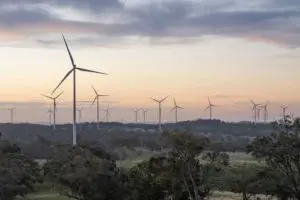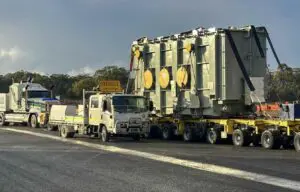“Don’t be afraid, don’t be scared, it won’t hurt you, it’s coal,” was the way the then Treasurer Scott Morrison taunted Australians when he waved around a lump of coal in the House of Representatives more than three years ago.
Morrison, and the other Coalition ministers who fondled the lump of coal that day didn’t get their hands dirty because they were protected by a layer of lacquer thoughtfully added by the coal lobbyists who provided the mini carbon-bomb, and who now serve in the prime minister’s inner advisory team.
But there’s no hiding the fingerprints of Morrison, energy minister Angus Taylor and their advisory teams over the latest atrocity – attempting to force-feed more of another dangerous fossil fuel into Australia’s transitioning energy system. And, as they did in February 2017, Australians have every right to be fearful of the consequences.
Morrison has never had anything intelligent to say about Australia’s energy system. His mocking comparison of big batteries such as the enormously successful Hornsdale Power Reserve to the Big Banana and the Big Prawn was idiotic and ignorant, and his efforts to promote “fair dinkum power” were ridiculed by the software billionaire Mike Cannon-Brookes.
But there is nothing accidental or haphazard about the Coalition’s latest threat to the energy industry; the attempt to force-feed more gas generation into Australia’s main grid and the massive government subsidies promised to extend its infrastructure and open up new gas basins. It may not make much sense, on any level, but that just makes it all the more sinister.
Morrison has made clear he wants the post-Covid recovery to be led by gas, and appointed gas lobbyists to direct the recovery plan. Taylor is seeking to hijack the two key renewable energy bodies to support gas and CCS, and has spent two years erecting bollards trying to slow down the clean energy transition.
One of the first things Taylor said after being appointed to the portfolio just over two years ago was to declare there was already too much wind and solar in the grid; not surprising from a man who fronted rallies for anonymous ginger groups railing against the “evils” of “fraudulent” wind farms.
One of the first things Taylor did as minister was to try to force-feed more gas into the grid, through the Underwriting New Generation Investment scheme – a promise to provide government money to back a decades-old technology. He gave himself about six months to land a deal – about the same time the government is giving private industry now – but predictably came up short.
After being surprisingly re-elected in May last year, the Coalition kept UNGI going, even identifying two “priority” gas projects late last year. Ten months later, Taylor still hasn’t been able to land a deal, even with the promise of taxpayer money – not that he’s much fussed because he knows, as the entire energy industry and regulators have made abundantly clear, that the lingering uncertainty over the program is stalling investment elsewhere.
Now the Coalition is not content with simply bringing investment in projects that it doesn’t like to a halt, it wants to try and control what is built where and when. It is an extraordinary intervention.
Taylor says he wants to see another 1,000MW of new “dispatchable” generation built to replace Liddell – despite the fact that AEMO, as Ketan Joshi explains, sees no need for this new capacity, and despite his own failures to secure any agreements of his own.
AGL has already flagged a 250MW gas generator at Liddell and a big battery of up to 500MW at the same location, as well as the 200MW of big batteries that is has commissioned from Maoneng. In all, it plans 1.2GW of battery storage by 2024.
Apparently not good enough for minister Taylor. His document talks of batteries of “appropriate duration”, but it is not clear what that means. And will AGL reach financial close by Taylor’s deadline of April, 2021, especially now given Taylor’s own failures, and the threat of this heavy-handed government intervention?
Taylor makes clear that if sufficient commitments are not made by April, he will get the government-owned Snowy Hydro to build its own gas generator at Kurri Kurri. Is that a board decision, minister? So much for the free market. That’s exactly the sort of nonsense that will scare off all private investment.
 Taylor and Morrison justify this intervention with some modelling from Frontier Economics, which is made to look deliberately scary because the scale starts at $50/MWh rather than zero. (See graph above).
Taylor and Morrison justify this intervention with some modelling from Frontier Economics, which is made to look deliberately scary because the scale starts at $50/MWh rather than zero. (See graph above).
But, hang on, what’s the market saying about this? This, below, is what the ASX Futures is telling us about what the market expects in NSW and elsewhere, based on what they expect to be built. NSW is the blue line.
What Taylor doesn’t tell us is that even if you believe Frontier’s modelling, the worst that can happen is that prices might return in four years to where they are now, under a Coalition government that has been in power for the last seven years.
But the market doesn’t expect a massive rebound, just a gentle rise upwards, because of all the projects that have already been announced, and which Taylor and his numbers people have deliberately chosen to ignore. What is clear is that if more gas is forced into the grid, then either energy consumers or taxpayers are going to have to pay.
In short, this is just another bunch of pure hocus pocus from what is possibly the most fundamentally dishonest, ideological and reckless governments in Australia’s history, particularly given the knowledge we now have over climate change, the threat to Australia’s environment and economy, the potential of the clean energy transition and the reality of falling clean technology costs.
To underline the point, Morrison claimed in his speech in Newcastle that “analysis by AEMO shows coal generation is still expected to comprise almost a quarter of the National Electricity Market in 2040.” But AEMO makes clear that this will be the case only in those scenarios that ignore the need to act on climate change. Ignoring experts, however, is one thing that Morrison does most.
At least, however, there is some promise of money for much-needed transmission projects, which could unlock some massive renewable energy hubs. But what’s the catch?











